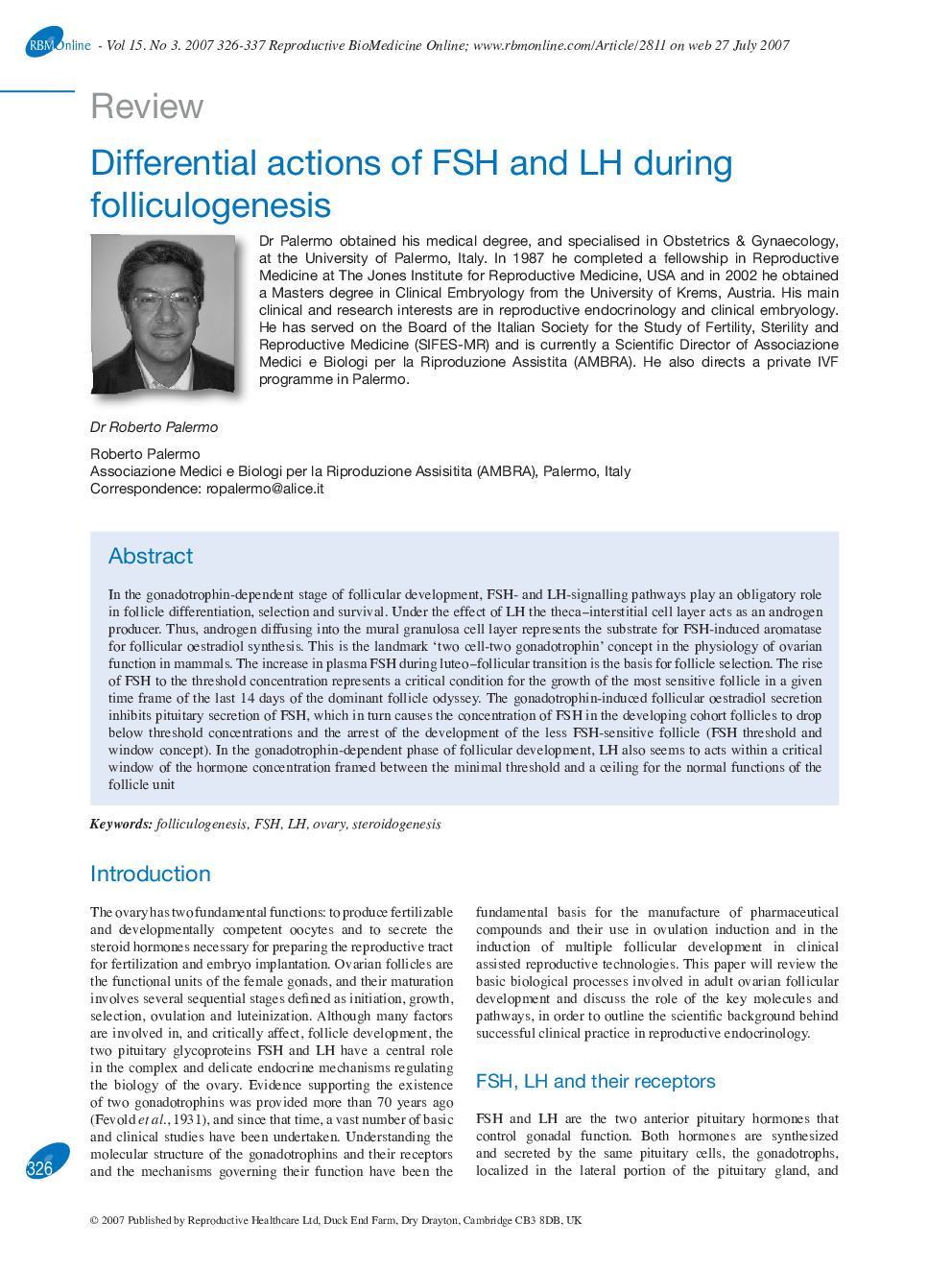| Article ID | Journal | Published Year | Pages | File Type |
|---|---|---|---|---|
| 3971463 | Reproductive BioMedicine Online | 2007 | 12 Pages |
In the gonadotrophin-dependent stage of follicular development, FSH- and LH-signalling pathways play an obligatory role in follicle differentiation, selection and survival. Under the effect of LH the theca–interstitial cell layer acts as an androgen producer. Thus, androgen diffusing into the mural granulosa cell layer represents the substrate for FSH-induced aromatase for follicular oestradiol synthesis. This is the landmark ‘two cell-two gonadotrophin’ concept in the physiology of ovarian function in mammals. The increase in plasma FSH during luteo–follicular transition is the basis for follicle selection. The rise of FSH to the threshold concentration represents a critical condition for the growth of the most sensitive follicle in a given time frame of the last 14 days of the dominant follicle odyssey. The gonadotrophin-induced follicular oestradiol secretion inhibits pituitary secretion of FSH, which in turn causes the concentration of FSH in the developing cohort follicles to drop below threshold concentrations and the arrest of the development of the less FSH-sensitive follicle (FSH threshold and window concept). In the gonadotrophin-dependent phase of follicular development, LH also seems to acts within a critical window of the hormone concentration framed between the minimal threshold and a ceiling for the normal functions of the follicle unit
